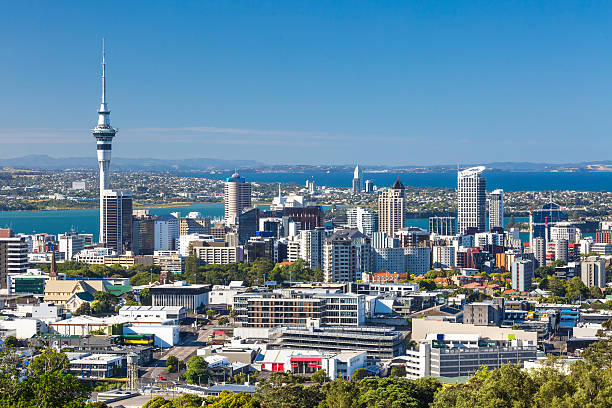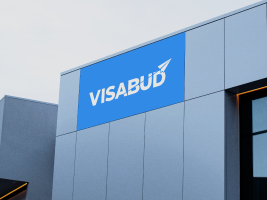Mauritania Travel Guide: All you need to know to visit Mauritania in 2024
Welcome to Mauritania
Welcome to Mauritania, a vibrant northwest African country with beautiful sceneries for visitors and tourists.
Geography
Mauritania is located in Northwest Africa; it has borders with Western Saharan, Algeria, Mali t and the southeast, and Senegal to the southwest. With an area of approximately 1,030,700 square kilometres, it is the eleventh-largest country in Africa. The landscape of Mauritania is diverse, characterized by vast desert regions, including parts of the Sahara Desert, in the north and central areas of the country. The Sahara desert dominates the eastern and southeastern regions, while the western coast features a narrow coastal plain along the Atlantic Ocean. Inland, the Adrar Plateau, and the Tagant Plateau are prominent geographical features. The country is also intersected by various wadis (seasonal rivers) and oases. The climate in Mauritania is predominantly desert, with hot temperatures and minimal rainfall. The geographical features and arid climate shape the country’s natural environment and present challenges and opportunities for its population.
Climate
Mauritania experiences a predominantly desert climate characterized by hot temperatures and low annual rainfall. The country is within the Saharan and Sahelian regions, resulting in arid and semi-arid conditions. Mauritania has two main seasons: a hot and tern Sahadry season, which extends from November to May, and a relatively more open and humid season, known as the rainy season, occurring from June to October. The coastal areas receive slightly more rainfall than the inland regions, with average annual precipitation ranging from 50 to 200 millimetres. Temperatures can be extreme, especially during the hot season, with daytime highs often surpassing 40°C (104°F) in the desert areas. Dust storms and occasional droughts are common climatic phenomena in Mauritania. The climatic conditions challenge agriculture and water resources, making the country vulnerable to food insecurity and desertification. However, Mauritania’s unique climatic features also support the preservation of unique ecosystems and contribute to its cultural and natural heritage.
Economy
Mauritania’s economy is predominantly based on mining, agriculture, and fishing. The country possesses significant mineral resources, including iron ore, copper, gold, and petroleum, which form the backbone of its economy. Mining activities attract foreign investment and contribute substantially to government revenue and export earnings. Agricultural activity is the leading economy, contributing to domestic food production. Livestock farming, mainly sheep and goats, is a critical agricultural sector.
Additionally, Mauritania benefits from its coastal location and rich fishing grounds, making fisheries a crucial industry. The country exports fish and fish products, contributing to foreign exchange earnings. However, Mauritania faces challenges such as a heavy reliance on natural resource extraction, vulnerability to fluctuating commodity prices, and socioeconomic disparities. Mauritania’s government has played a significant role in diversifying the economy by promoting tourism, renewable energy, and infrastructure development, aiming to foster sustainable growth and reduce dependence on extractive industries.
Government
Mauritania is a presidential republic with a system of government characterized by a strong executive branch. The President of Mauritania heads the state and is elected by the majority votes for a five-year term. The country has a unicameral legislature known as the National Assembly, consisting of deputies elected by the public. The judiciary is independent and operates through a hierarchical system, with the Supreme Court serving as the highest judicial authority. Mauritania has faced challenges related to political stability, human rights, and democratic governance. The government has been implementing reforms to strengthen democratic institutions, improve human rights protections, and enhance transparency and accountability. The country is a UN and AU member and maintains diplomatic relations with countries worldwide.
Languages
The official language of Mauritania is Arabic, reflecting the country’s cultural and historical ties to the Arab world. Arabic is used in government, administration, education, and media. However, due to the diverse ethnic composition of the population, several other languages are also spoken. The Fula ethnic group widely says Pulaar (Fulfulde), while various communities also speak Soninke, Wolof, and Hassaniya Arabic. French, a legacy of colonial rule, is commonly used in business, education, and official communication.
Additionally, indigenous languages such as Zenaga and Tamasheq are spoken by smaller ethnic groups. The multilingual nature of Mauritania reflects the country’s cultural diversity and contributes to the rich linguistic tapestry of the nation. Efforts are made to promote linguistic diversity and preserve indigenous languages, ensuring the cultural heritage of different communities is maintained.
Population
The population of Mauritania was estimated to be around 4.5 million people. The country has a diverse population of various ethnic groups, including the Arab-Berber Moors, black Africans, and smaller communities of Fulani, Soninke, Wolof, and others. Most people reside along the coast and in major cities such as Nouakchott, Mauritania’s capital and largest city. Mauritania’s population faces challenges related to poverty, limited access to education and healthcare, and issues related to desertification and rural migration.
Culture
Mauritania’s culture is diverse and influenced by its Arab-Berber, African, and Islamic heritage. Traditional Moorish culture, shaped by Bedouin traditions, plays a significant role. Hospitality and respect for elders are valued cultural traits. Islamic customs and practices heavily influence daily life, with mosques as important community gathering places. Traditional music, such as Mauritanian griot music, with its distinctive stringed instruments and storytelling through poetry and oral traditions, is integral to the cultural fabric. The country is known for its unique art forms, including intricate woodcarvings, metalwork, and textiles. Traditional attire, such as the flowing boubou, reflects cultural identity and is commonly worn. Mauritania also hosts annual cultural festivals, such as the Nouakchott International Festival, showcasing traditional music, dance, and crafts. The rich cultural heritage of Mauritania is celebrated and preserved, with efforts made to pass down traditions and customs to future generations, fostering a sense of national identity and pride.
Related Articles

5 min read
New Zealand Introduces Key Changes to Post Study Work Visa : What You Should Know
According to the government, this change will provide students with greater flexibility in their academic choices while ensuring they remain eligible to work. For many students, studying abroad is a
Read More
5 min read
The Singapore visa processing time for Indian citizens
Singapore is a small island located in the Malay Peninsula in Southeast Asia. It is one of the most economically developed countries in the world. Singapore is a fantastic place
Read More
5 min read
How Much Does an Australia Trip Cost from India?
If you are planning a trip from India to Australia, you must follow some of the points. that are : Planning Budget Traveling date and time To which place you
Read MoreYes, Indian citizens must have a visa to travel to Mauritania
Travellers must have the following:
- Valid original passport with a validity of 6 months.
- Visa application forms
- Two recent coloured photograph
- Proof of accommodation
- Invitation letter
- Travel itinerary
- Visa application fee
- Supporting documents
The visa is valid for a 30-day stay and extendable upon request.
Yes, the Mauritania visa is extendable upon request
Travelling checklist
- Valid passport with six months before expiry
- Valid visa
- Confirmed return ticket
- Foreign currency
- Proof of accommodation
- Additional documents supporting the purpose of the visit.
